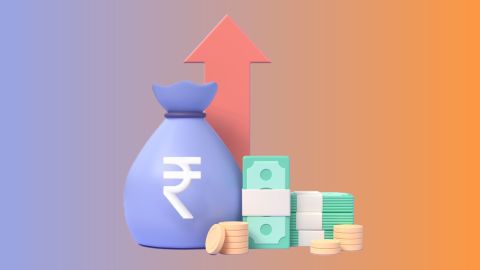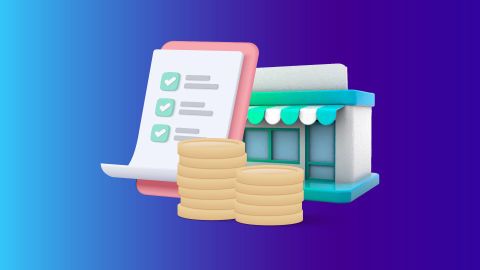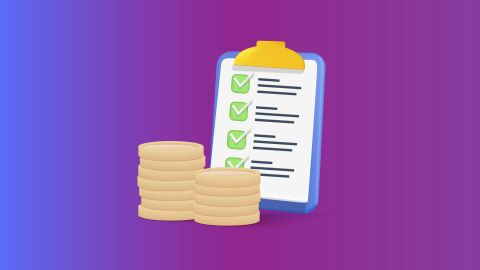How does the business cycle work?
The business cycle is a natural phenomenon that occurs in all economies and is an essential aspect of macroeconomic analysis. The business cycle is affected by multiple factors, including changes in consumer demand, technological innovation, fiscal and monetary policies, geopolitics, and natural disasters. Entrepreneurship drives innovation and adaptation during different phases of the business cycle.
During the expansion phase, consumer and business confidence is high, credit is cheap, and output, employment, and income are increasing. These factors stimulate demand, leading to an increase in production and GDP. However, this phase cannot continue indefinitely and eventually leads to a decline in growth, resulting in a contraction phase.
Example of a business cycle
An example of a business cycle in India would be the period from 2003 to 2008, known as the Indian boom. During this time, the economy experienced high levels of growth due to a combination of factors such as a liberalised economy and foreign investments. However, this period was followed by a contraction phase during the global financial crisis of 2008-2009, leading to a slowdown in the economy. The Indian economy has since seen phases of both expansion and contraction, with the government implementing policies to manage the business cycle. Businesses during such times need proper legal frameworks like the articles of association to ensure structured growth and compliance.
Importance of business cycles
The business cycle plays an important role in shaping the economic landscape and is a crucial element of economic analysis. Understanding the business cycle can help policymakers, businesses, and individuals prepare for and respond effectively to economic fluctuations. It can also help inform investment decisions, risk management strategies, and financial planning activities. Managing and mitigating the impact of business cycles is essential for sustaining long-term economic growth, stability, and welfare for individuals and society as a whole.
Stages of the business cycle
Below is a detailed explanation of each stage in the business cycle:
Expansion
This is the first stage of the business cycle. During expansion, important signs of the economy improve — such as more jobs, higher incomes, increased production, better wages, bigger profits, and more demand and supply of goods and services. People who owe money usually pay it back on time. Money moves quickly in the economy, and investments grow. This stage continues as long as the economic conditions stay good.
Peak
Next, the economy reaches its highest point, called the peak. This means growth cannot increase any further. Economic signs stay at their top levels, and prices are also very high. This stage marks a turning point when growth stops increasing. People start to change how they spend money at this time.
Recession
After the peak comes the recession. Here, demand for goods and services starts to fall quickly and steadily. Producers may not realise the fall in demand immediately and continue making goods, leading to extra stock that isn’t sold. Prices begin to drop. Income, production, wages, and other positive signs of the economy also start to fall.
Depression
Unemployment rises a lot during this stage. The economy’s growth keeps falling and drops below normal levels. This low point in economic activity is called a depression.
Trough
In the depression, the economy shrinks more and more until demand, supply, prices, and production all reach their lowest levels. This low point is called the trough. It is the bottom of the cycle, where the economy is at its weakest. National income and spending fall a lot.
Recovery
After the trough, the economy starts to improve in the recovery stage. Demand begins to increase because prices are low, so supply also rises. People become more confident about investing and getting jobs, and production starts to grow again. Employment goes up, and banks start lending more money. Old equipment and capital are replaced with new investments. The recovery continues until the economy grows steadily again.
This completes one full business cycle, moving from boom (growth) to contraction (slowdown). The highest point is called the peak, and the lowest is the trough.
What causes business cycles?
Business cycles are the fluctuations in economic activity that occur over time, typically characterized by periods of expansion (growth) and contraction (recession). Several factors cause these cycles, including:
- Demand fluctuations: Changes in consumer and business demand for goods and services can lead to expansions or contractions. High demand leads to growth, while reduced demand triggers a slowdown.
- Supply shocks: Sudden changes in the availability of resources (like oil, labour, or raw materials) can disrupt production, leading to either inflationary growth or economic slowdown.
- Monetary policy: Central banks influence business cycles through interest rates and money supply. Lower interest rates can boost growth, while tightening monetary policy can lead to a contraction.
- Government fiscal policy: Government spending and taxation policies impact business cycles. Increased public spending can drive growth, while higher taxes or reduced spending may cause economic contraction.
- Technological innovations: Major technological advancements can lead to new industries and increased productivity, sparking periods of economic expansion.
- Investor confidence: Business cycles are influenced by the confidence of investors and businesses. High confidence boosts investments and growth, while low confidence can lead to reduced spending and a downturn.
- Global events: Wars, pandemics, and global trade dynamics can significantly impact business cycles, leading to either growth or contraction depending on their nature.
- Business investment cycles: Fluctuations in corporate investments, like in infrastructure or machinery, influence economic activity, leading to periods of growth or recession.
- Credit cycles: Changes in credit availability and lending practices by financial institutions can drive business cycles. Easy credit boosts spending and growth, while credit tightening can lead to a slowdown.
- Consumer sentiment: Consumer confidence directly affects spending and saving behavior. High confidence drives consumption and economic growth, while pessimism can result in reduced spending and economic contraction.
Phases of the business cycle
The business cycle has four phases, as mentioned below:
1. Expansion
The first stage of the business cycle is expansion. During this phase, key economic indicators such as employment, income, output, wages, profits, and the demand and supply of goods and services show an increase. Debtors usually pay off their debts on time, the money supply flows quickly, and investment levels are high. This phase continues as long as the economic conditions support growth.
2. Peak
The economy reaches its highest point, known as the peak, which is the second stage of the business cycle. At this point, economic growth stops, and the indicators level off at their highest. Prices also reach their peak. This marks the point where economic growth starts to reverse, and consumers tend to adjust their budgets.
3. Recession
Following the peak is the recession stage. Demand for goods and services begins to decline steadily. Producers often continue to produce at the same rate, not noticing the reduced demand, which leads to excess supply in the market. Prices begin to fall, and other economic indicators such as income, output, and wages also start to decline.
4. Depression
During the depression stage, unemployment rises significantly. The economy continues to shrink, and as growth falls below a steady rate, it is considered a depression.
5. Trough
In the depression phase, the economy’s growth rate becomes negative. This decline continues until the prices of goods and services, as well as supply and demand, reach their lowest point. The economy hits the trough, marking the point of extreme decline, and national income and expenditure experience a substantial drop.
6. Recovery
After reaching the trough, the economy enters the recovery stage. At this point, the economy begins to bounce back from negative growth. Demand increases as prices remain low, leading to a rise in supply. The public’s attitude towards investment and employment becomes more positive, and production starts to grow again.
Regardless of the phase your business is currently navigating—be it expansion, recession, or recovery—having financial flexibility can help you stay ahead. Check your pre-approved business loan offer and explore funding options to ensure you're equipped to handle changing market dynamics.
Features of Business Cycles
Business cycles vary in length and strength.
They happen regularly but not in a fixed pattern.
The duration of each cycle can be short or long.
The size of economic ups and downs can be mild or severe.
Business cycles have four main stages: expansion, peak, contraction, and trough.
These stages don’t always happen smoothly or predictably.
The time each stage lasts can change every cycle.
Business cycles mostly occur in free market economies.
Problems in one sector often spread to other sectors quickly.
All sectors are affected by business cycles, but some are hit harder.
Industries making machinery and durable goods suffer more than agriculture.
Business cycles are complicated and have different causes each time.
It is hard to predict exactly when a cycle will start or end.
Effects of business cycles are seen in many economic areas: production, jobs, investment, spending, interest rates, trade, and prices.
Business cycles can spread internationally through trade links.
For example, the Great Depression of the 1930s began in the USA and Britain and affected many countries worldwide.
Business cycles have serious effects on the overall well-being of society.
Relation between inflation and business cycle
The relationship between the business cycle and inflation is often intricate. Typically, during periods of economic expansion, the demand for goods and services increases. In response, businesses boost production, which can lead to upward pressure on prices, resulting in higher inflation.
Conversely, during economic contractions, overall activity tends to slow. This reduction in demand may lead to a decrease in inflation, as businesses scale back output and price growth stabilises or declines.
However, this relationship is not always directly proportional. Various external factors, such as fiscal and monetary policies, as well as global economic developments can also influence inflation independently of the business cycle.
How is the business cycle measured?
Several key indicators are used to assess the different phases of a business or economic cycle. These help track changes in economic activity over time:
- Unemployment rate: This labour market metric reflects the overall health of an economy. A declining unemployment rate typically signals economic expansion, as businesses hire more workers. Conversely, rising unemployment during downturns indicates economic contraction.
- Stock market performance: A strong stock market often points to a healthy economy, with businesses performing well and investor confidence remaining high. Poor stock performance may indicate economic weakness. Broad market indices are commonly used to observe these trends.
- Inflation trends: Rising inflation may suggest growing demand and economic expansion, while falling inflation could point to weakening demand and a struggling economy. However, excessive inflation can also destabilise growth, so observing inflation patterns over time offers useful insights into the business cycle.
- Gross Domestic Product (GDP): GDP tracks the total economic output of a country. It tends to rise during periods of growth and decline during recessions. A positive GDP growth rate signals expansion, whereas a negative rate indicates contraction.
- Industrial production: This measures the output of industries such as mining, manufacturing, and utilities. Changes in industrial production levels help assess activity in the manufacturing sector and provide a practical view of economic momentum during different stages of the business cycle.
Which factors influence the business cycle?
The business cycle is shaped by a range of factors that can either stimulate or slow down economic activity. Below are some of the most significant influences:
- Consumer and business confidence: High confidence levels often lead to increased spending and investment, fuelling economic growth. When confidence declines, both consumers and businesses tend to cut back on spending, which can slow the economy.
- Technological advancements: Innovations can enhance productivity and stimulate economic expansion. However, when older technologies become obsolete, it may lead to disruptions and a temporary slowdown in economic activity.
- Global economic conditions: The economic performance of key trade partners can affect domestic growth. For instance, a recession in a major export destination may reduce demand for goods and impact the exporting country's business cycle.
- Political instability: Events such as political unrest, war, or frequent changes in government can create uncertainty, discourage investment, and negatively affect economic activity.
- Economic policy: Fiscal and monetary policies, including changes in taxation, interest rates, and public spending, can significantly influence the pace of economic growth or contraction.
- Natural disasters: Events like earthquakes, floods, or droughts can interrupt production, damage infrastructure, and slow down economic activity, thereby affecting the business cycle.
Tips for handling the business cycle
Here are some tips for handling the business cycle:
1. Implement risk management strategies for different phases of the business cycle.
2. Keep an eye on consumer demand and adjust production accordingly.
3. Have a diversified portfolio of products or services to reduce dependence on a single market or sector.
4. Maintain adequate cash reserves to manage through economic slowdowns.
5. Monitor and adapt to changes in monetary and fiscal policies.
6. Prepare contingency plans for economic downturns and plan for recovery.
7. Invest in technological innovation to improve efficiency and reduce costs.
8. Keep abreast of geopolitical events that may affect the economy and adapt your strategy accordingly.
Conclusion
The business cycle is a natural cycle of expansion and contraction in the economy that impacts businesses. Entrepreneurs need to understand the business cycle and adapt to the different phases. By planning ahead, diversifying product or service offerings, building reserves, and investing in innovation, entrepreneurs can navigate the business cycle effectively. Bajaj Finserv Business Loan provides a cushion for businesses during tough times, making it an excellent financing option to consider during a contraction or trough phase of the business cycle.
Helpful resources and tips for business loan borrowers






